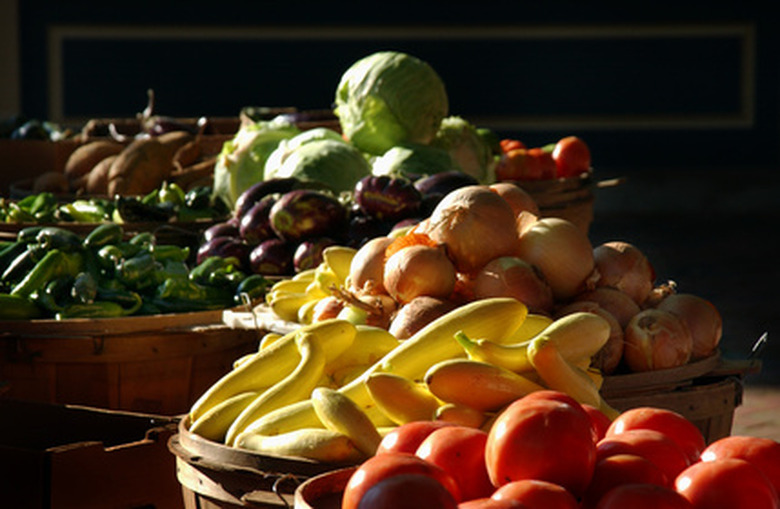Growing Vegetables In Southwest Florida
Things Needed
- Pen
- Paper
- Vegetable seeds
- Vegetable transplants
- Rake
- Herbicide
- Water
- Compost
- Manure
- Fertilizer
- Shovel
- Garden markers
- Mulch
- Water-soluble liquid fertilizer
Southwest Florida gardeners have the benefit of growing year-round vegetable gardens. The area's warm temperatures and sub-tropical climate offer prime conditions for growing vegetables, with September through April being the most productive months. As with gardening elsewhere in the state, select vegetable varieties appropriate for the season you are planting. Vegetables such as certain lettuces and broccoli perform best in cooler seasons, whereas sweet and hot peppers, as well as eggplant, prefer to grow in warm temperatures.
Step 1
Create a plan of your garden, which includes the vegetables you desire to grow, supplies needed and how much space is required for each vegetable to grow properly. This will give you an idea of how big of an area is required for your vegetable garden.
Step 2
Select a site that receives six to eight hours of sunlight daily, drains well and is located within a short distance to a water supply and your house. The easier your garden is to maintain, the less likely you will be to neglect it.
- Southwest Florida gardeners have the benefit of growing year-round vegetable gardens.
- Create a plan of your garden, which includes the vegetables you desire to grow, supplies needed and how much space is required for each vegetable to grow properly.
Step 3
Prepare the site by removing unwanted grasses, weeds, rocks and other debris. Rake the area clean. If you use herbicides to kill unwanted vegetation, water the area well two to three times per week and wait at least two weeks before sowing seeds or planting transplants, to clear the area of unwanted herbicidal poisons.
Step 4
Work in 25 to 100 pounds of compost or manure for every 100 square feet of your garden's soil, as southwest Florida soil is sandy and lacks nutrients. Till the organic material into the soil to a depth of at least 1-inch. Apply two to three weeks before planting.
Step 5
Apply 4 pounds of fertilizer for every 100 square feet of soil. Use an 8-8-8 or 15-15-15 all-purpose fertilizer, working it 2 inches into the soil. The first number represents the percentage of nitrogen, aiding in growth and coloration. The second number represents the percentage of phosphorous, aiding in root and bloom development and the third number represents the percentage of potassium, aiding in building a tolerance to cold, drought and disease. Southwest Florida vegetable gardens will benefit from the extra soil nutrients. Water after applying and wait two to three weeks to plant.
- Prepare the site by removing unwanted grasses, weeds, rocks and other debris.
- If you use herbicides to kill unwanted vegetation, water the area well two to three times per week and wait at least two weeks before sowing seeds or planting transplants, to clear the area of unwanted herbicidal poisons.
Step 6
Create raised beds and rows running from east to west to ensure the plants receive the maximum amount of sunlight. Consider planting the tallest variety of vegetables on the northern end of the rows or beds to utilize the most sunlight.
Step 7
Plant your seeds or transplants into the garden soil at the specified depth and distance between each one. Mark each row with a plant marker to designate which vegetable is growing where. List the variety and days to maturity.
Step 8
Water the vegetable transplants and seeds after planting. Southwest Florida experiences year-round consistent hot temperatures, so water the garden once every day to two days, depending on local weather conditions. Apply a coating of mulch around plants to help retain moisture in the soil.
- Create raised beds and rows running from east to west to ensure the plants receive the maximum amount of sunlight.
Step 9
Fertilize weekly with a water-soluble 10-10-10 liquid fertilizer, covering each plant's foliage in its entirety. Vegetables grown in southwest Florida require the extra nutrients during their growth stage for best production.
Tip
Adding marigolds to your vegetable garden will repel a variety of insects, as well as give it more color. Rotate the location of your garden every year to cut down on the possibility of your new garden plants contacting a soil-born disease or bacteria.
